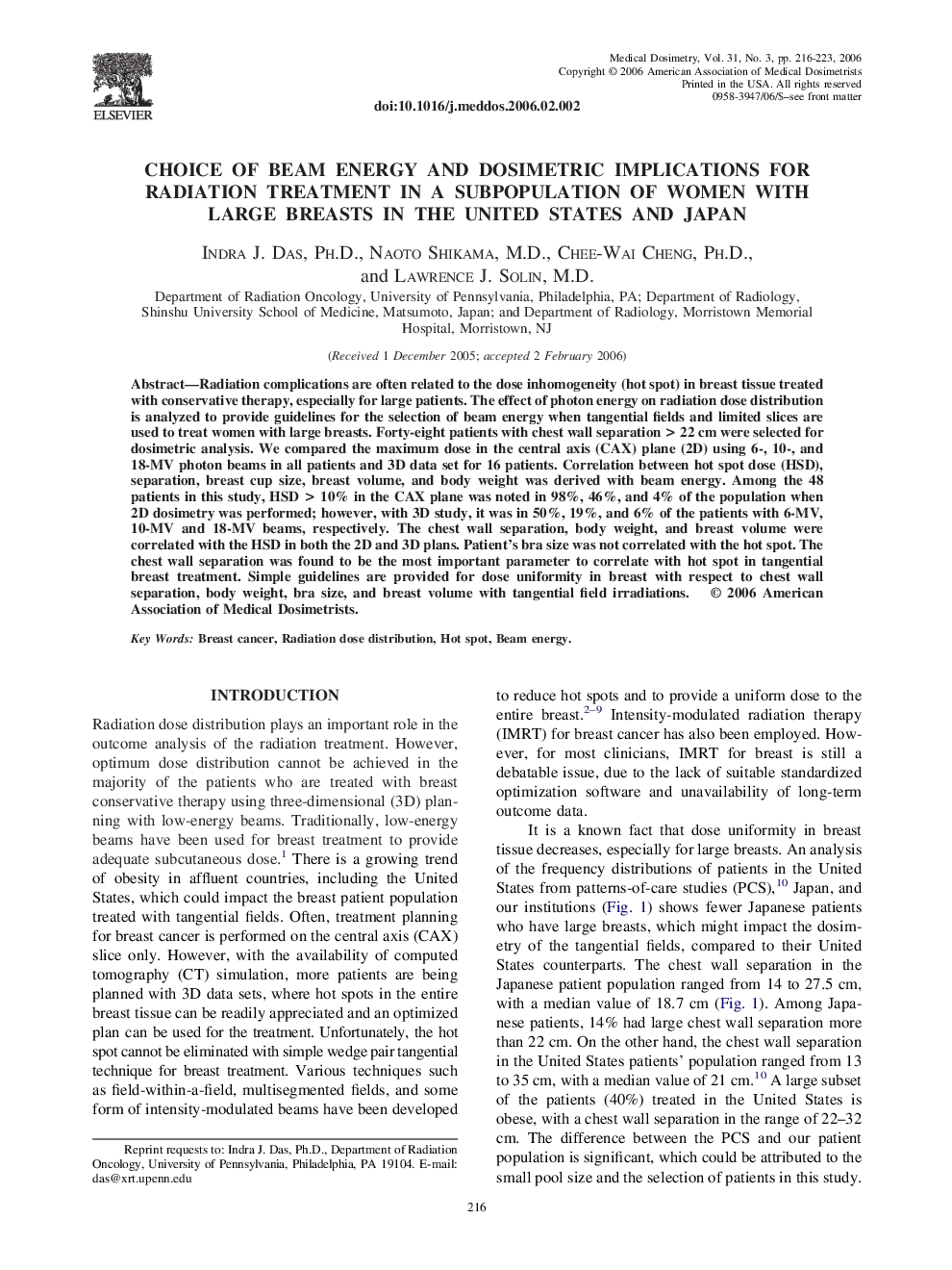| Article ID | Journal | Published Year | Pages | File Type |
|---|---|---|---|---|
| 1885684 | Medical Dosimetry | 2006 | 8 Pages |
Abstract
Radiation complications are often related to the dose inhomogeneity (hot spot) in breast tissue treated with conservative therapy, especially for large patients. The effect of photon energy on radiation dose distribution is analyzed to provide guidelines for the selection of beam energy when tangential fields and limited slices are used to treat women with large breasts. Forty-eight patients with chest wall separation > 22 cm were selected for dosimetric analysis. We compared the maximum dose in the central axis (CAX) plane (2D) using 6-, 10-, and 18-MV photon beams in all patients and 3D data set for 16 patients. Correlation between hot spot dose (HSD), separation, breast cup size, breast volume, and body weight was derived with beam energy. Among the 48 patients in this study, HSD > 10% in the CAX plane was noted in 98%, 46%, and 4% of the population when 2D dosimetry was performed; however, with 3D study, it was in 50%, 19%, and 6% of the patients with 6-MV, 10-MV and 18-MV beams, respectively. The chest wall separation, body weight, and breast volume were correlated with the HSD in both the 2D and 3D plans. Patient's bra size was not correlated with the hot spot. The chest wall separation was found to be the most important parameter to correlate with hot spot in tangential breast treatment. Simple guidelines are provided for dose uniformity in breast with respect to chest wall separation, body weight, bra size, and breast volume with tangential field irradiations.
Keywords
Related Topics
Physical Sciences and Engineering
Physics and Astronomy
Radiation
Authors
Indra J. Ph.D., Naoto M.D., Chee-Wai Ph.D., Lawrence J. M.D.,
